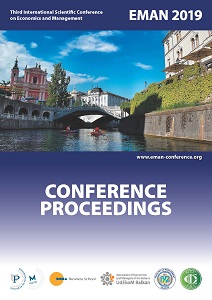STRUCTURED IMPLEMENTATION OF A RISK MANAGEMENT SYSTEM ON THE EXAMPLE OF A MEDIUM-SIZED INDUSTRIAL ENTERPRISE
STRUCTURED IMPLEMENTATION OF A RISK MANAGEMENT SYSTEM ON THE EXAMPLE OF A MEDIUM-SIZED INDUSTRIAL ENTERPRISE
Author(s): Peter Davids, Milan Fekete
Subject(s): Business Economy / Management
Published by: Udruženje ekonomista i menadžera Balkana
Keywords: management;risk management;quality management;medium-sized enterprise;chemical industry;
Summary/Abstract: Risk management is not always an intentionally controlled process. There are basic structures considering some of the obvious risks but those structures are often lacking proper documentation and implementation. As the scope for risk management has widened more and more during the last 10 years, it is absolutely essential that SME’s, the same as distinguished private companies, large private companies and public companies, run a modern structured and fully implemented risk management system. According to § 91 II of the German Stock Corporation Act, it is a part of the care obligations of the members of the Management Board (analogous to Limited Companies’ managing directors, see § 43 I and II of the German Limited Companies Act) to establish an appropriate risk management system and an internal monitoring system. An additional actual demand for risk management is stipulated in the new ISO 9001:2015 quality management standards. On the example of a company, which is a SME involved in the chemical industry, the requirement for risk management, which is codified in the described regulations, has so far been taken into account only to a limited extent. The goal of the paper is therefore to build options for implementing a risk management as an integral part of monitoring and control system on the existing structures within the corporate planning. It must also be ensured that the identification and proof of all of the measures in this respect should be carried out in a manner that is comprehensible for the auditors, because „… the auditor must support the Supervisory Board by examining the risk-early warning system as a part of the audit of the annual financial statements and, in the context of the management report, the disclosure of risks to the future development of the company and reporting on the outcome of the audit” (Wirtschaftsprüferhandbuch, 2000). Within the framework of the presented paper, basic structures will be created in order to subsequently enable a gradual refinement of risk management as the result of an exploratory process.
Book: EMAN 2019 / 3 – Economics & Management: How to Cope with Disrupted Times - CONFERENCE PROCEEDINGS
- Page Range: 423-430
- Page Count: 8
- Publication Year: 2019
- Language: English
- Content File-PDF

